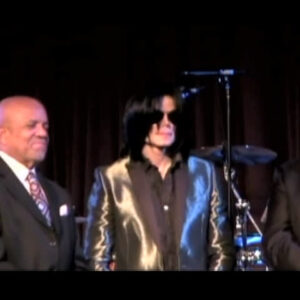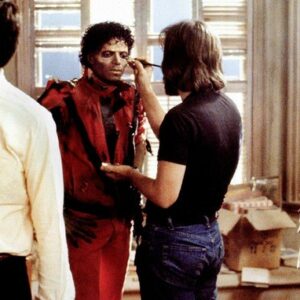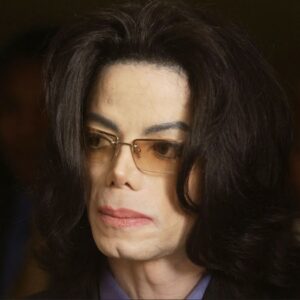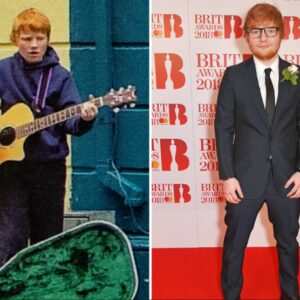In the ever-evolving landscape of cinema, few actors have established a reputation as effortlessly magnetic and versatile as Ryan Gosling. His career has been marked by a range of performances that balance depth, charm, and complexity. Gosling, known for his breakout roles in films like The Notebook, Drive, and La La Land, has not only earned accolades for his acting chops but has also demonstrated a deep, almost intuitive understanding of the cinematic medium itself. However, one of the most underappreciated facets of his career is the essential collaborations he has nurtured with some of the industry’s most talented cinematographers.
These partnerships are not merely a side note in Gosling’s career—they are fundamental to the striking visual narratives that define his most iconic films. While much of the attention often falls on the actor’s performances, the importance of the cinematographers behind these films cannot be understated. Through their lenses, Gosling’s characters come alive, not just through dialogue and expression but through the power of imagery and mood. In this article, we explore the key dynamics of Gosling’s relationship with cinematographers, and how these collaborations have shaped both his performances and the visual aesthetics of modern cinema.
Gosling’s Vision and Cinematic Aesthetic
Gosling’s on-screen presence is undeniably captivating, but what sets him apart from many of his peers is his deep appreciation for visual storytelling. He approaches every role with a profound respect for the camera as a tool for conveying emotion, and his films are often defined by the mood they evoke as much as the narratives they present. Gosling’s cinematic aesthetic is grounded in his unique ability to marry his performances with the visual tone of a film.
This symbiotic relationship between Gosling and the visual components of his films can be traced to his understanding of how powerful imagery can be in storytelling. Whether he’s playing a stoic stunt driver in Drive or a jazz musician in La La Land, Gosling is acutely aware of how each frame can deepen the audience’s emotional connection to the character. His pursuit of visual consistency, particularly the use of lighting, color, and composition, speaks to his interest in creating not just a performance, but an experience.
For Gosling, this visual storytelling isn’t just the responsibility of the director or the cinematographer—it is something he actively participates in. He has developed a nuanced understanding of how camera movements, lighting, and framing can influence a scene’s emotional resonance, and he works closely with cinematographers to ensure these elements align with his portrayal. His attention to detail and willingness to learn from experts in the field further enhance his ability to bring characters to life in ways that feel natural, yet profoundly cinematic.
Key Cinematographers He’s Worked With
One cannot discuss Gosling’s visual aesthetic without acknowledging the remarkable cinematographers with whom he has collaborated. Two names that stand out in particular are Emmanuel Lubezki and Linus Sandgren, both of whom have significantly shaped the look and feel of Gosling’s most iconic films.
Emmanuel Lubezki, known for his groundbreaking work on films like The Revenant and The Tree of Life, is a master of natural lighting and fluid camera movements. While Gosling has not worked extensively with Lubezki, his influence is apparent in films like Song to Song (2017), where the cinematographer’s ability to capture fleeting, raw moments of human connection complements Gosling’s subtle, introspective performance. Lubezki’s style of using long, unbroken takes and minimal artificial lighting allows the actors to immerse themselves fully in the scene, and Gosling’s understated yet powerful acting fits seamlessly into this visual framework. The result is a film that feels more like a vivid memory than a scripted narrative, with Gosling’s character at the heart of its emotional journey.
Linus Sandgren, on the other hand, has become one of Gosling’s most significant collaborators. Sandgren’s work on La La Land earned him an Academy Award for Best Cinematography, and it’s easy to see why. The film’s lush, dreamlike visuals are integral to its success, and Sandgren’s ability to blend nostalgia with modernity mirrors Gosling’s dual role as both an idealist and a realist in the film. From the opening sequence’s bold use of color and choreography to the intimate lighting during the quieter, more reflective moments, Sandgren’s camera captures every nuance of Gosling’s performance, allowing the audience to feel as though they are witnessing a grand, romantic dream unfold in real-time.
Sandgren and Gosling’s collaboration on La La Land exemplifies how a strong actor-cinematographer partnership can elevate a film from good to iconic. Their shared understanding of the film’s visual language allowed Gosling’s performance to shine in ways that transcended traditional acting—he didn’t just play the role; he became part of the film’s aesthetic, as integral to the visual spectacle as the choreography and music.
Building a Collaborative Relationship
At the heart of Gosling’s successful partnerships with cinematographers lies his respect for their craft. Gosling approaches his collaborations with a mindset of mutual learning and trust. He recognizes that the cinematographer’s lens is just as important in shaping a character as his own performance, and he takes an active role in discussing the visual tone and style of the film from the earliest stages of production.
One of the key aspects of Gosling’s collaboration with cinematographers is his ability to communicate effectively. Rather than merely following the director’s and cinematographer’s instructions, he engages in conversations about how the lighting, framing, and camera movement can enhance his performance. Gosling’s work ethic—marked by meticulous preparation and a willingness to explore different visual interpretations of a scene—creates an environment of creativity and trust on set. This collaborative spirit enables cinematographers to take risks and push the boundaries of traditional filmmaking.
For Gosling, these relationships are about more than just creating visually stunning films—they are about telling stories that resonate on an emotional and visual level. His willingness to adapt his performances to the cinematographer’s vision shows a deep understanding of the collaborative nature of filmmaking. This mutual respect fosters a sense of partnership that transcends the traditional actor-cinematographer dynamic, leading to films that are cohesive in both narrative and visual execution.
The Impact on Films
The results of these collaborations are films that are not only visually striking but emotionally resonant. In Drive (2011), for example, the neon-drenched streets of Los Angeles become a character in their own right, reflecting the internal turmoil of Gosling’s character. Cinematographer Newton Thomas Sigel used lighting and color to evoke the loneliness and danger that define the film’s tone, while Gosling’s restrained, almost stoic performance complemented the visual storytelling. The result is a film where every frame feels deliberate, each shot contributing to the overall mood and tension.
Similarly, in La La Land, Gosling’s collaboration with Sandgren creates moments of pure cinematic magic. One of the film’s most iconic scenes—the planetarium dance sequence—highlights the actor’s seamless integration into the film’s visual narrative. As the characters defy gravity and float among the stars, the cinematography mirrors the characters’ emotional journey from grounded reality to whimsical fantasy. Gosling’s ability to convey vulnerability and hope, combined with Sandgren’s masterful use of light and shadow, turns this scene into a breathtaking blend of performance and visual artistry.
Long-Term Partnerships and Mutual Growth
Over time, Gosling has built long-term relationships with certain cinematographers, fostering a sense of creative growth that benefits both parties. These partnerships have allowed Gosling to experiment with different visual styles while maintaining a sense of consistency in his approach to storytelling. Cinematographers like Linus Sandgren, with whom Gosling has collaborated on multiple occasions, have developed a shorthand with the actor, enabling them to push creative boundaries without sacrificing the integrity of the film.
As both Gosling and his collaborators have grown in their respective careers, their partnerships have evolved to reflect their shared experiences and artistic development. This mutual growth has resulted in films that are not only technically impressive but deeply personal, with each project building on the last to create a body of work that feels cohesive and intentional.
Conclusion
In a film industry that often prioritizes spectacle over substance, Ryan Gosling’s collaborations with cinematographers stand out as a testament to the power of visual storytelling. These partnerships have been instrumental in shaping some of the most iconic films of the past decade, elevating Gosling’s performances and the films themselves to new heights. By fostering mutual trust and a shared commitment to the craft, Gosling and his cinematographer collaborators have created films that are as visually stunning as they are emotionally resonant.
Through his career, Gosling has shown that true cinematic magic is not created in isolation—it is the result of a collective effort, where every element, from the performance to the visuals, works in harmony to tell a compelling story. His approach to building and nurturing these professional relationships serves as an inspiring model for filmmakers and actors alike, reminding us that the heart of great cinema lies in collaboration.





